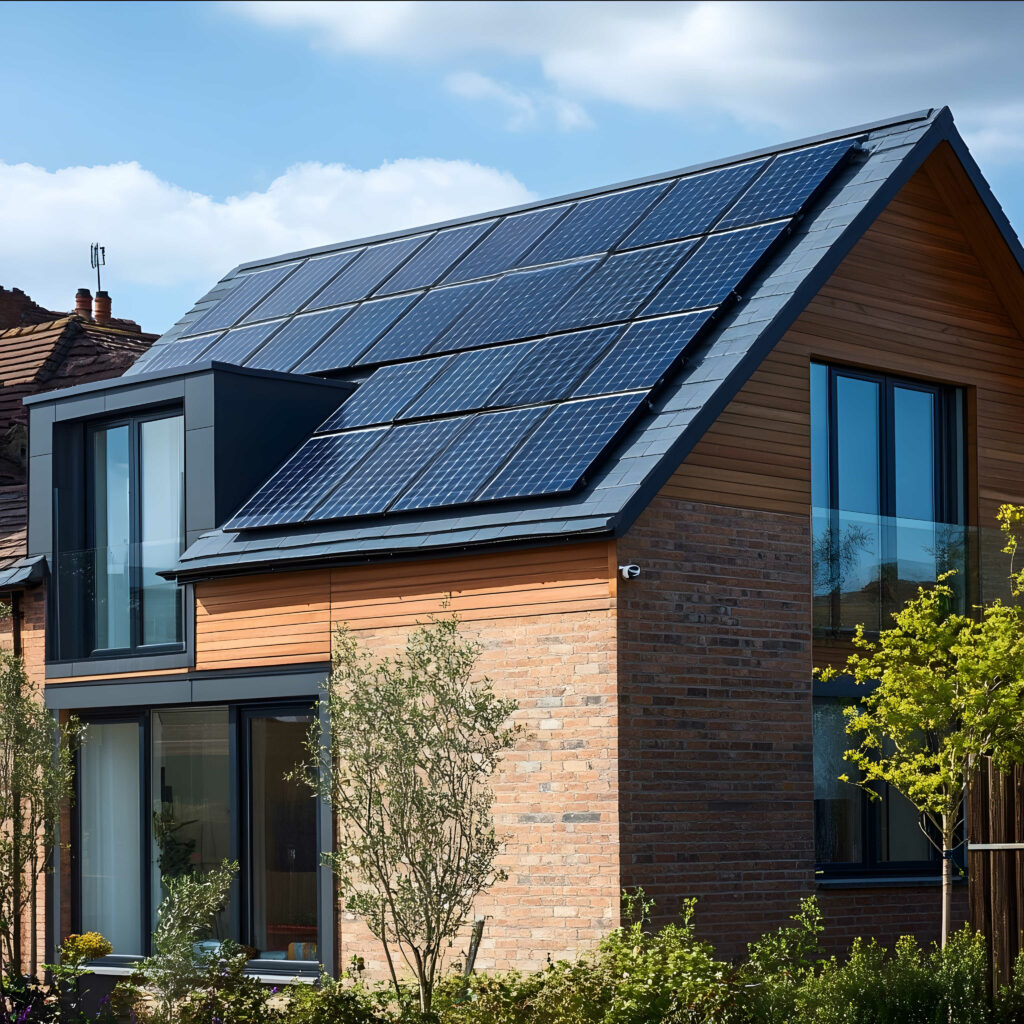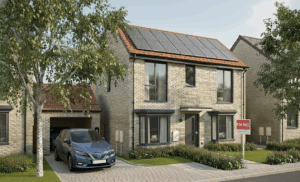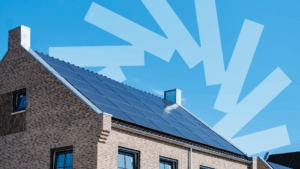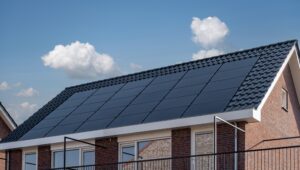As the UK accelerates its transition to clean energy, solar leasing is emerging as a powerful tool for housebuilders and homeowners alike. Whether you’re developing affordable housing or looking to reduce fuel poverty, solar leases offer a cost-effective, low-risk path to sustainable energy. Companies like Gryd are leading the charge, making solar more accessible than ever.
What Is a Solar Lease?
A solar lease allows households to benefit from solar energy without the upfront cost of purchasing a system.
Under a solar lease model, the provider is granted rights to use the airspace above the roof – not the land itself – to install and operate the solar system. This legally defined arrangement ensures the provider can access the system for maintenance while the homeowner retains full control of their property.
In exchange for a third-party provider (like Gryd) deploying and maintaining the solar panels that provide the home energy, the homeowner pays a fixed monthly fee – which is designed to be lower than traditional energy bills. This model removes the financial barriers of high upfront hardware costs and provides immediate savings.
Earlier solar lease models, particularly in the U.S., sometimes included complex Power Purchase Agreements (PPAs) with escalating costs and transfer difficulties. These leases were often found to be overly restrictive on homeowners. However, the industry has evolved significantly since then.
UK Finance, the trade association representing the UK banking industry and all major lenders, has set out clear guidance to combat the terms that made previous lease models so onerous
Modern leases are much more straightforward, with clear terms and conditions that are designed to be approved quickly by mortgage providers. Gryd’s solar leasing model has been developed with leading UK real estate law firms and independently reviewed to ensure full compliance with UK Finance guidelines. It meets the requirements of all major mortgage lenders, supporting a smooth path to approval and installation.
Benefits of a Solar Lease vs. Solar Ownership
Benefits to Homeowners:
While owning a solar system can be the right choice for some, leasing offers distinct advantages that make it attractive to many homeowners:
- Zero Upfront Costs: Unlike ownership, which often requires thousands of pounds in initial investment, a solar lease like Gryd’s allows homeowners to enjoy solar energy with no upfront capital outlay.
- No Maintenance Responsibility: All servicing, monitoring, and maintenance of the solar system are handled by the provider. Homeowners don’t have to worry about panel efficiency, inverter replacement, or system upkeep.
- Long term predictability: Lease models typically come with fixed or predictable payments, giving homeowners stable energy costs while reducing overall energy bills. Gryd’s model guarantees households a fixed, low monthly subscription fee for the 25-year life of the solar system.
- Risk-Free Adoption: With no asset depreciation to worry about and no need to resell equipment, solar leasing minimises financial and operational risk.
- Ideal for Shorter-Term Homeowners: For those who don’t plan to live in their homes long enough to see the full ROI of solar ownership, a lease offers immediate benefits without long-term commitment.
Benefits to Housebuilders:
For housebuilders, choosing leased solar over owned systems offers a range of benefits:
- Cost-Neutral Compliance with Building Regulations: Leased solar enables housebuilders to meet the latest compliance standards to deliver homes that are truly built for a net zero future – without bearing the system cost directly.
- Simplified Cash Flow: Since the cost of the solar hardware is not included in the housebuilder’s capex, it preserves capital for other priorities.
- Sales-Ready Homes: With Gryd’s pre-approved lease model, homes come ready with compliant solar systems that are attractive to buyers but don’t add complexity to the sales process.
- Faster Build-Out and Planning Approvals: Local authorities increasingly favour developments that integrate renewable energy – and it will become a mandatory requirement from 2027 under the Future Homes Standard. Leased solar helps unlock planning permissions and improve site viability, especially in affordable and social housing.
- No After-Sales Support Burden: Because a third-party provider like Gryd owns and operates the system, housebuilders are not responsible for maintenance or service calls post-sale.
- Improved Buyer Appeal: Offering homes with solar leases can increase the property’s appeal and speed of sale, especially as energy-conscious buyers look to reduce bills and their carbon footprint.
In short, leased solar helps housebuilders deliver greener homes, faster and more affordably – without becoming solar asset managers themselves.
How Solar Leases Transfer During Resale
One common concern is what happens to a solar lease when selling a home. Modern solar leases like Gryd’s are designed to transfer smoothly to new homeowners. Our process follows the below key steps:
- Seller notifies the buyer: The seller should inform potential buyers that the property includes a Gryd solar lease.
- Lease flagged during conveyancing: Because Gryd’s lease is registered on the property’s title, it will automatically be highlighted by solicitors during the conveyancing process.
- Buyer has options: The incoming homeowner can either continue with the Gryd subscription or choose to buy out the lease and take full ownership of the system.
- Sale proceeds as normal: The house purchase completes as usual, with all parties aware of the solar lease and factoring it into the transaction.
- Lease transfers automatically: The new homeowner automatically inherits the lease as part of the property purchase – there’s no need to re-sign unless they opt to buy it out.
- New owner registers with Gryd: After completion, the new homeowner registers with Gryd and starts benefiting from cleaner, cheaper energy from day one.
This streamlined process ensures that a solar lease doesn’t hinder the home sale.
The success of solar leasing is already evident in the U.S., Australia and parts of Europe. Companies like Sunrun in the U.S. have surpassed 900,000 residential solar customers, with a 98% lease transfer success rate during home sales.
Solar leases like Gryd’s offer a practical solution for homeowners and housebuilders aiming to embrace renewable energy without significant upfront costs. With streamlined transfer processes, regulatory compliance, and support from financial institutions, solar leasing makes the benefits of solar accessible to millions more homeowners.
If you’re a housebuilder looking to future-proof your developments, get in touch with our team to learn how solar leasing can work for you.





